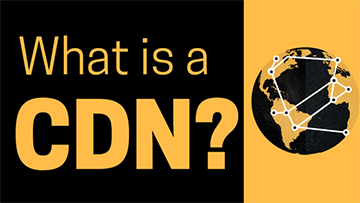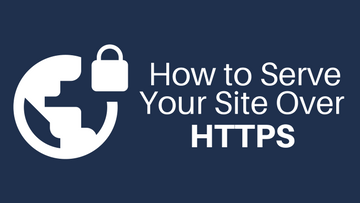 What is a CDN?
What is a CDN?
A Content Delivery Network, commonly referred to as a CDN, offers a way to cut down on bandwidth usage and site load time. How does it do this? Well, that requires some explanation about how CDNs work.
 CDNs are a network of geographically dispersed servers. They have servers in many different locations, commonly called points of presence (PoP). CDNs can hold some of the content for your site so when visitors load your site, the content will load directly from the CDN. Loading directly from the CDN reduces the strain placed on your hosting server, who would regularly be the one to hold all the files.
CDNs are a network of geographically dispersed servers. They have servers in many different locations, commonly called points of presence (PoP). CDNs can hold some of the content for your site so when visitors load your site, the content will load directly from the CDN. Loading directly from the CDN reduces the strain placed on your hosting server, who would regularly be the one to hold all the files.
Not only does this help out your server, but it also helps out your visitors. Visitors attempting to load media for a site will access the CDN’s PoP closest to them, thus cutting time down the load time it may have taken to load from a more distant server.
Advantages of Using a CDN
When used appropriately, a CDN can decrease the time it takes to load your site. As mentioned earlier, visitors who try to load site content from a CDN will automatically load it from the PoP closest to their physical location. This may not initially seem like a big deal, but imagine trying to access a site from another country. If your CDN had a PoP within that country, you would be able to hop to the closest PoP and begin loading, thus cutting out the request’s travel time to another country.
CDNs also may help handle high volume traffic. Since traffic will be able to access the PoP closest to them, high volumes of incoming traffic accessing CDN content will be balanced between different CDN servers. This takes some of the pressure off the site’s hosting server to provide bandwidth.
What Kind of Content Can Be Used with a CDN?
CDNs are a great resource to have, but you need to know what kind of content works well with a CDN and what doesn’t. As we mentioned earlier, media works great with a CDN. Whether you want it to serve images or videos, the CDN has you covered when it comes to media files.
Another type of content that works well with CDN is static content. Static files cannot be changed by user input. A few examples of static content would be your HTML or CSS files.
However, while media and static content work well with CDNs, dynamic content does not. Dynamic files can be changed by user input. For example, dynamic might take the form of a page that generates for the visitor at the time of their visit. While this may be good for viewer-specific content, the files for this should not be in your CDN. Dynamic content should remain on your hosting account.
How are CDNs Billed?
CDNs are usually billed based on how much of the CDN’s bandwidth you use. For example, pairCDN, our pair Networks-specific CDN, bills in 10 GB “buckets.” CDN bandwidth is separate from your hosting account’s bandwidth allotment, so you don’t need to worry about your CDN exceeding your bandwidth allotment or hitting your bandwidth limit. This separation between the hosting account and the CDN bandwidth may be helpful or detrimental, depending on its setup. However, the separation is usually helpful.
How to Choose a CDN
When choosing a CDN for you and your site, there are several things to consider. Naturally, you want a CDN that will give you the best service, so here are some tips to think about while looking at CDNs.
First off, consider the location of a CDNs PoPs. You will definitely want points of presence close to the bulk of your audience. Having a CDN with PoPs near the smaller portions of your audience is also a bonus. The more PoPs a CDN possesses, the more likely of this occurring.
You should also look into the background of the CDN. Does it have a history of reliability or do reviewers say that the CDN has caused them problems?
Likewise, consider the CDN’s pricing plan. Is it straightforward? Do you see potential for hidden fees? Take our CDN’s billing plan for example. We bill you for what we call “buckets.” Buckets contain 10GB of CDN server data for $1. Once you use up 10GB, you will automatically start on the next bucket. At the end of the billing cycle, you will be charged for how many buckets you used. The CDN will never stop serving your content because you reached the data limit.
You should also consider whether the CDN has any support options to help you with CDN set up. If you have any questions or concerns, will you be able to reach a support professional to help you through?
CDN in Review
If you can find a reliable CDN with clear pricing, existing support, advantageously placed PoPs, it can be a serious asset to your site. With the potential to increase site loading times, decrease hosting account bandwidth usage, and support larger volumes of visitors, CDNs could transform your site. While dynamic content may need to remain on your hosting account, you can move over all your media and static files to be served by your CDN. This can cut down on the bandwidth used by your hosting account. If you’re interested in a CDN, but don’t know where to start, you can check out our CDN here!




